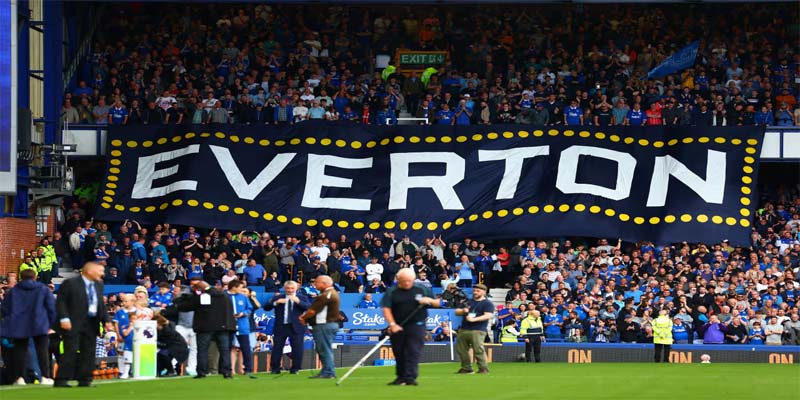Everton Football Club: Unveiling Secrets Behind a Legendary Club

Everton Football Club: Unveiling Secrets Behind a Legendary Club
Everton Football Club has long been a cornerstone of English football, embodying both tradition and passion. Established in the year 1878, this club has developed an identity that resonates deeply with its fans. The Everton Football Club is not just about 69vn football; it’s a community, a culture, and a legacy. In this blog post, we’ll delve deep into the history, significance, achievements, and future prospects of this legendary club.
Introduction to Everton Football Club
The Everton Football Club story is one of resilience, triumph, and unwavering dedication. From its humble beginnings in the working-class district of Everton, Liverpool, to becoming a formidable force in world football, the club’s journey encapsulates the heart and soul of the sport. Its blue colors are synonymous with loyalty, and the fanbase is renowned for its passion and commitment.
History and Development of the Club
When we talk about the history of the Everton Football Club, it’s essential to start from its roots. Founded in 1878 as St. Domingo’s FC, the club aimed to provide a place for local cricketers to play football during the winter months. The name changed to Everton in 1879 following the team’s acceptance into the FA.
As the club began to grow and gain recognition, they played their first match at Anfield, which would later become the home of rival club Liverpool FC. However, in 1892, a dispute over rent caused Everton to leave Anfield and move to Goodison Park, where they have remained ever since. This move was pivotal, not only because it signified a new chapter for the club, but also because Goodison Park became one of the world’s first purpose-built football stadiums, further entrenching Everton’s status within the sport.
Over the decades, Everton has had its share of challenges and successes. The early 20th century brought glory, with the club winning several league titles. Yet, like many clubs, there were times of struggle during and after World War II. Nevertheless, the rebuilding efforts post-war led to another golden era in the 1960s and ’70s. The legendary manager Harry Catterick guided the team to multiple trophies, embedding the club’s ethos into the fabric of English football.
Moving into the late 20th century and early 21st century, Everton continued to build on their rich history, investing in youth development and scouting efforts to ensure the club always had a steady influx of talent. The emphasis on developing local players reflects the club’s commitment to its community and heritage.
Key Achievements in the Club’s History
The achievements of the Everton Football Club are numerous and varied. One of the most significant accomplishments came when the club won its first league title in 1891, followed by several more throughout the early years, solidifying its place as one of England’s top clubs.
In addition to the league victories, Everton has also enjoyed success in domestic cup competitions. They have lifted the FA Cup five times, with notable wins in the 1980s under the management of Howard Kendall. The pinnacle of their achievements arrived in the 1985-86 season when they claimed the European Cup Winners’ Cup, showcasing their prowess on an international stage.
Another noteworthy aspect of Everton’s history is its record as one of the founding members of the Premier League. Since its inception in 1992, the club has consistently maintained its position in the top tier of English football, serving as a testament to its stability and resilience.
This rich tapestry of achievements extends beyond trophies. The Everton Football Club is also known for its contribution to player development, with legends such as Dixie Dean, who remains a symbol of the club to this day. His scoring prowess made him a household name, and his legacy continues to inspire generations of players and fans alike.
Progress and Improvements in Recent Years
In recent years, the Everton Football Club has embarked on a journey of modernization and progress. With the arrival of new ownership and leadership, there has been a renewed focus on investment, both in the squad and the infrastructure surrounding the club.
Everton’s decision to invest heavily in their youth academy illustrates their commitment to developing homegrown talent. The establishment of a state-of-the-art training facility has attracted some of the best young prospects in the region, potentially setting the stage for the emergence of future stars who can wear the famous blue shirt.
Moreover, the club’s ambition doesn’t stop at player development. Plans for a new stadium at Bramley-Moore Dock signal a transformative moment in Everton’s history. This move is aimed at not only modernizing the club’s facilities but also enhancing the matchday experience for fans. The new stadium will allow for a greater capacity and improved amenities, which are crucial as the club looks to compete at the highest level.
Off the pitch, Everton has strengthened its global brand through strategic partnerships and community outreach programs. Engaging with fans worldwide and enhancing the club’s visibility has become integral to their strategy, ensuring that the Everton Football Club remains relevant and connected in an increasingly digital age.
Conclusion
The Everton Football Club is more than just a football club; it is a symbol of endurance, community, and pride. From its storied history to its ongoing evolution, the club embodies the essence of what makes football so special. As we unravel the secrets behind this legendary institution, it becomes clear that Everton’s impact extends far beyond the pitch.






